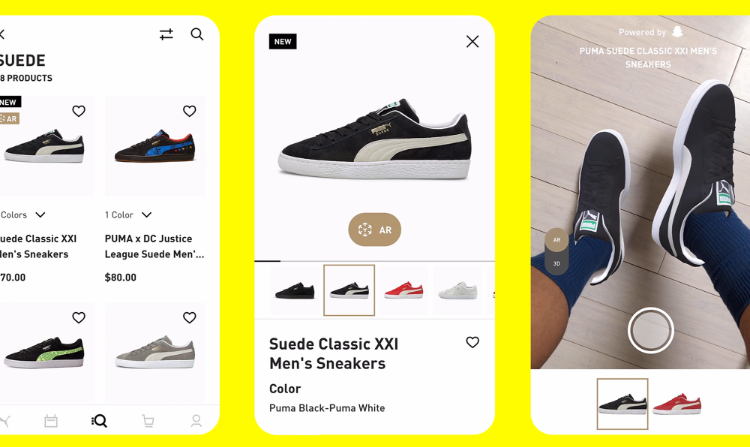What does the future hold for the ecommerce industry? Luckily we don’t need to look into a crystal ball to predict these ecommerce trends. We already see rapid changes in the ecommerce industry thanks to increased competition and innovative developments in artificial intelligence.
It’s worthwhile to take note of these ecommerce trends since they will impact your business, your clients, and your strategic approach when it comes to standing out online.
For starters, ecommerce has continued its meteoric rise as people of all ages become significantly more comfortable with its assurance of privacy, security, and the usability of the internet to get what they want quickly.
Top online retailers ensure their products can be purchased at comparable prices to brick-and-mortar stores. These purchases also take little effort to complete.
Online shopping is now extremely competitive in offering comparable prices and cheap shipping. As well as the ability to sometimes find more than you can in an actual retail store. The ability to utilize the trends that enhance ecommerce is driving its profits higher every year.
As we move into 2023, new ecommerce trends are emerging to meet the needs of online shoppers. Let’s take a look at what’s currently trending.
2023 Ecommerce Trends
As it continues to pick up speed, ecommerce trends are growing within this fast-paced sales arena. Many of the new ecommerce trends focus on building customer experience and relationships as you would if they were in an actual store.
Here are some trends that are now starting to drive the ecommerce market:
1. Creating conversations
The great thing about this trend is that it offers people a choice online. An in-store experience often involves being approached by a salesperson, which makes many people uncomfortable; however, online, you can build personal relationships and enhance the experience for consumers without any pressure to buy.
A company can offer support before, during, or after an online sale. But the buyer can control the amount of conversation and contact. They can feel confident they have support when they need it without being hit with high sales pressure. Ecommerce tailors the shopping experience to suit each buyer. While ecommerce is sometimes said to be cold, the trend is moving towards being more human and less automated.
2. Chatbot customer support
This is one of the best trends to hit ecommerce and has become the fastest-growing communication channel for businesses. It adds to online conversations and allows customers to control the level of communication they want with a seller.
For those who want prompt and correct answers, the chatbot trend bridges the need for interaction without being over the top. 65% of customers say they like using chatbots since they can get quick answers, which speaks to their ease of use.
AI is improving in leaps and bounds, and this trend will continue to move ecommerce sales forward with on-the-spot chats to give immediate information.
3. Augmented reality (AR) online shopping
AR is one of the latest industry trends and is only becoming better as technology improves. Once again, the industry is focused on bridging the gap between what can be done in-store versus online. Augmented reality allows people to test out or try on items they are looking to buy so people are more comfortable with what they are purchasing, leading to fewer returns.
Social media apps like Snapchat have created new features to address this demand for AR. In 2022, they launched a Dress Up feature within the app to help ecommerce brands extend their reach. Users can now virtually try on clothing without leaving the comfort of their homes. They can even take pictures of themselves with these items and share them with their friends to get a second opinion.
As online shopping becomes more immersive and convenient thanks to AI technology, and people feel more confident about purchasing online, it’s only natural that we see a lift in conversion rates.

4. The Internet of Things (IoT)
The Internet of Things enables us to sync our physical retail with our digital retail systems, blurring the lines between traditional commerce and ecommerce.
For example, retailers using smart shelves to understand what's out of stock or misplaced are approaching the level of insight into their inventory management that an ecommerce operation would have.
Another example is companies that send personalized discounts to customers' devices or accounts based on their in-store and online activity, leveraging data from both realms to create a unified and consistent customer experience.
5. Social commerce
Social commerce is helping drive ecommerce. The reason is that people are more engaged than ever with social media.
In 2022, social media users spent 2 hours and 27 minutes engaging on various apps. For context, only 10 years ago, social media users spent 1 hour and 30 minutes. As a result of people’s addiction to endless scrolling and targeted ads, businesses are grabbing people's attention.
These targeted ads get multiple hits and have direct links to the desired product. Customers go directly to the item they want to buy.
Related: 5 Social Ecommerce Trends For Your Online Strategy in 2023
6. Voice search shopping
Voice search is a big part of the future of ecommerce. As people are more comfortable with the privacy and security of products such as Google Home, Apple’s Siri, and Amazon’s Alexa, voice searches for products become more frequent. This leads to optimized descriptions allowing people to purchase items without using a computer or smartphone.
As these AI products improve and make purchasing easier, customers will move to a more hands-free interaction.
7. Ecommerce globalization
Ecommerce means there are fewer boundaries and borders when it comes to shopping. That said, most retailers tend to sell in limited currency, languages, and channels.
Now, that trend is shifting, and retailers are required to have more of a global mindset. There is a movement to allow people to buy items in the currency they are comfortable with, in their primary language, and through channels they normally use, no matter where they are.
Those in the ecommerce industry should think globally versus nationally, moving their sales to a broad-based platform rather than a limited one that only targets a certain demographic.
8. Subscription services
This ecommerce trend is booming. Bundling products at a discounted price for the buyer brings assured sales for the seller through periods of upheaval like we’ve seen during COVID-19 and past recessions. Mckinsey & Company has researched this trend with in-depth ideas about its continued upward expansion.
Beauty subscription box service Ipsy saw a major rise in new customers during the pandemic as we were forced to shelter at home. The company leveraged its data also to provide customers with more personalized experiences and product recommendations.

When customers sign up for a box, they are also asked to fill out an online quiz to figure out their skin concerns and product preferences to ensure customers are happy about the contents of their subscription box. Their ability to innovate and listen to customer needs during difficult periods has turned them into one of the most successful subscription services in recent years and the second fastest-growing beauty account on TikTok.
With its growth bounding over 100% in the last five years, it’s believed that subscription services will only continue their upward journey.
Stay Up To Date With Ecommerce Trends
There is no doubt that ecommerce is only going to pick up speed as both ecommerce technology and online user comfort increase. If you are working in the ecommerce industry, there are ways to stay on top of digital trends as they change.
Sign up for The Ecomm Manager newsletter to stay updated on best practices, hints, and tips in the ecommerce industry. As you work to build your online shopping presence, creating a strong online community with other ecommerce professionals is helpful. Whether you want to ask questions, brainstorm, or bounce ideas off others, we can be an integral part of this process.
More ecommerce trends on ECM:
- 6 Key B2B Ecommerce Trends For 2023
- Top 10 Ecommerce Technology Trends Of 2023
- 5 Social Ecommerce Trends For Your Online Strategy In 2023
- Mobile Ecommerce Trends for 2023: The Statistics Say It All
- 6 Global Ecommerce Trends For 2023 & How To Take Advantage
- Ecommerce Growth Trends: What’s Happening For 2023?


